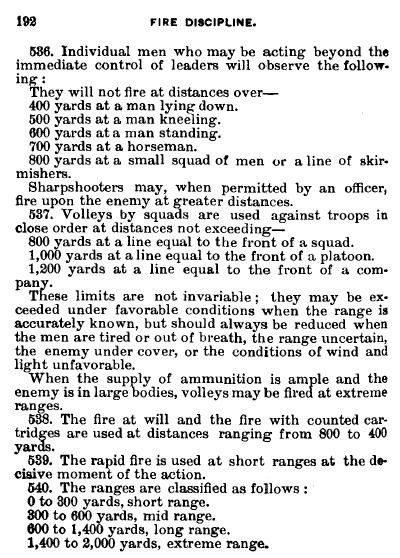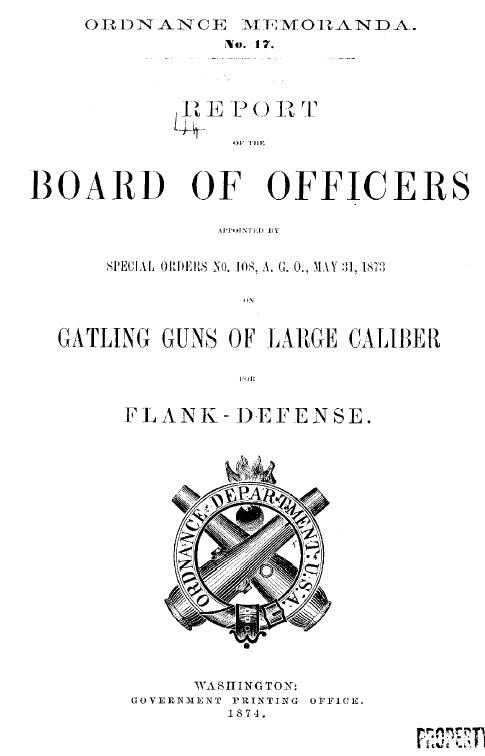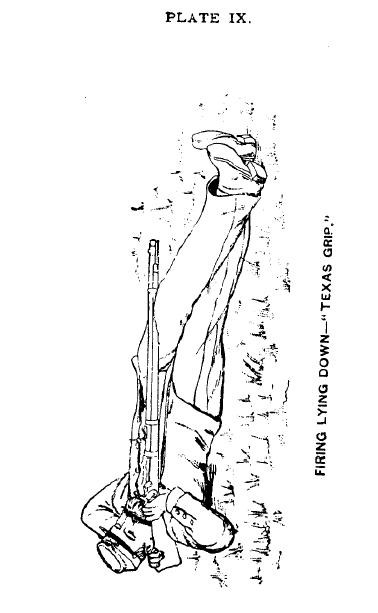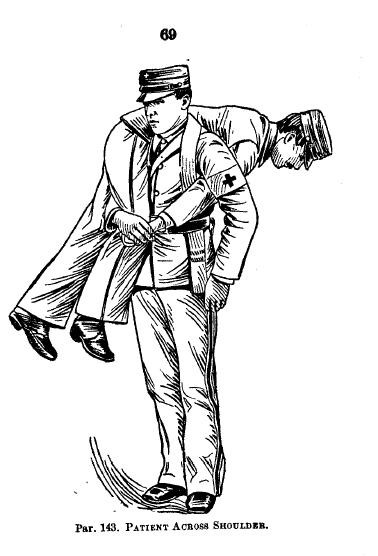Starting from:
$12.95
Military Field Manuals 1792-1899
Military Field Manuals 1792-1899
4,387 pages of military manuals, regulations, textbooks, memoranda, and handbooks dating from 1792 to 1898.
The 24 titles include:
British Army, Rules and Regulations (1792)
A 173-page manual titled, "Rules and Regulations for the Formations, Field Exercise and Movements of His Majesty's Forces." The guidelines in this manual were instrumental in the development of general rules and regulations of the United States Military. George Washington kept a copy of this manual in his library. The manual's introduction reads; "The great object in view from these regulations is to establish one general and just system of movement, which directing and governing the operations of great as well as small bodies of troops, is to be rigidly conformed to and
practiced by every regiment in His Majesty's Service."
Infantry Tactics, for the Instruction, Exercise, and Maneuvers of the Soldier, a Company, Line of Skirmishers, Battalion, Brigade, or Corps D'Armee ( Casey's Tactics ) (1862) Volume I
Infantry Tactics, for the Instruction, Exercise, and Maneuvers of the Soldier, a Company, Line of Skirmishers, Battalion, Brigade, or Corps D'Armee ( Casey's Tactics ) (1862) Volume II
Casey's Tactics became the standard for infantry tactics during the Civil War. These three volumes of Infantry tactics were based on the French Ordinances of 1831 and 1845, for the maneuvers of heavy infantry and chasseurs a' pied. Both of these systems were in use by the U.S. military for many years; the former having been translated by Lieutenant-General Scott, and the latter by Lieutenant- Colonel Hardee. Brigadier General Casey for many years studied the maneuvers of infantry. In 1854 he became president of a board assembled by the WarDepartment, for the review, correction of the translation of Lieutenant-Colonel Hardee. With the changes in weapons over the next seven-years, Casey saw the need to change the provisional movements and formations in order of battle.
Among the many topics covered: Formation of line of battle composed of several brigades. Manner of forming company in two ranks. Formation in line of battle of a regiment. Manner of forming company in two ranks. Use of arms. Instruction for skirmishes.
Firing Regulations for Small Arms (1889)
This book sets a course of instruction in rifle and carbine firing. The course of instruction is in three main divisions: (1.) The Preliminary Drills and Exercises. (2.) Individual Practice at Known Distances and in Skirmish Firing. (3.) Range or Field Practice of the Company as a body. Topics
includes: Sighting Drills, Position and Aiming Drills, Gallery Practice, Skirmish Firing, Volley and File Firing Variations in the Trajectory, The Trajectory as Affected by the Atmospheric Conditions, The Effects of Fire, Estimating Distances by Sight, and Estimating Distances by Sound.
The Hand-Book of Artillery, for the Service of the United States (Army and Militia.) Including the Manual and Mechanical Maneuvers of Heavy Artillery (1875)
Subject headings include: Artillery in General. Guns. Howitzers. Mortars. Sea- Coast Artillery. Siege Artillery. Field Guns and Batteries. Pointing Guns and Howitzers. Pointing Mortars. Charges. Ranges. Ricochet. Recoil. Windage. Gun Powder. Projectiles. Laboratory Stores. Platforms. Artillery
Carriages and Machines. Practical Gunnery. Parrott Rifle Gun.
General Regulations, or Military Institutes, 1821 (1821)
Provides standards for a wide range of military needs. Among the many topics: Rank and command, Military honours, Base of interior police and service, Arrests and confinements, Messing, Quartering, Dress: personal cleanliness and neatness, Organization of departments, Economy of an army in campaign, Battles: general dispositions, Sieges, Defense of
places, Prisoners of war, Field Hospitals, Recruiting.
General Regulations 1861, Revised 1863 (1863)
Provides standards for a wide range of military needs. Among the many topics: Military Discipline. Rank and command. Succession in Command of Duty. Appointment and Promotion of Commissioned Officers. Resignations of Officers. Exchange or Transfer of Officers. Appointments of the Staff. Distribution of the Troops. Care of Fortifications. Artillery Practice. Regiments. Companies. Deceased Officers. Deceased Soldiers. Deserters. Discharges. Arrests and Confinements.
Hours of Service and Roll-Calls. Honors to Be Paid By Troops. Inspections of the Troops. Troops in Campaign. Courts-Martial. Medical Department. Flags, Colors, Standards, Guidons. Uniform, Dress, And Horse Equipment.
Manual for the Medical Department (1898)
Topics covered include: Appointment of Medical Officers. Army Medical School. Assignment of Medical Officers. Examinations for Promotion. Duties of Medical Officers in the Field. Hospital Corps. Hospital Corps in Time of War. Instruction in First Aid. Ambulance Service. Hospital Buildings. Army and Navy General Hospital. Hospital Fund. Medical Supplies. Reports and Returns. Report of Sick and Wounded. Nomenclature of Diseases. Operations for Hernia. Certificates of Disability. Examination of Recruits. Artificial Limbs. Furniture and Appliances for Operating Room.
Manual for Army Cooks (1896)
An 1896 militaristic cookbook. Covers the special needs and responsibilities of an Army cook. Includes 300 recipes for soups, fish, sauces, meats, poultry, vegetables, fruits, eggs, breads, puddings, coffee and tea. A section is dedicated to Spanish dishes: Spanish Stew, Spanish Steak, "Estufado", Dried Beef with Peppers, "Salza" , "Frijoles",
"Frijoles con Queso", Stuffed Chiles (green), Brain (Spanish style), "Tamales" , "Tortillas", "Chile con Carne", Spanish Fried Rice and Jambalaya. Instructional sections include: Methods of
cooking: Roasting, Baking, Boiling, Simmering, Stewing, Broiling, Frying, and Sautéing. Cleaning utensils. How to save drippings. Tables of weight and measures. Description of meats. Messing.
Soldier's Handbook, 1884 (1884)
Soldier's Handbook, 1889 (1889)
The first instruction: "All inferiors are required to obey strictly and to execute with alacrity and good faith, the lawful orders of the superiors appointed over them."
Drill Regulations for the Hospital Corps, United States Army (1896)
Instructions for Hospital Corps members on: Alignments, Marches, Use of litters, Ambulance drills, Inspection and Muster, Hospital bugle call, First Aid outlines.
Troops in Campaign ( Regulations for the Army of the United States ) (1892)
Infantry Drill Regulations, United States Army with Interpretations (1891)
Ordnance Memoranda No. 17 Gatling Guns ( Report of the Board of Officers Appointed by Special Orders No. 108, A.G.O., May 31, 1873, on Gatling Guns of Large Caliber for Flank Defense ) (1874)
Composed of reports of tests to decide upon the caliber of guns to be tried, and the ammunition to be used, in the experiments and tests of two Gatling guns of large caliber for flank-defense of fortifications.
Ordnance Memoranda No. 29 ( Horse Equipment and Cavalry Accoutrements) (1891)
Specifications for and descriptions of horse equipment and cavalry accoutrements.
Projectiles and Rifled Cannon Systems of Projectiles and Rifling with Practical Suggestions for Their Improvement ( Report to the Chief of Ordnance ) (1875)
Drawings of projectiles, fuses, etc., and plans of rifling, accompanied with explanations and reports on projectiles and rifled cannon systems of projectiles and rifling,
The Fortifications of To-Day (1883)
A Board of Engineers for Fortifications and River and Harbor Improvements collection of studies of fire against models of coast batteries and parados. Horizontal and curved fire in defense of
coasts. Composed of translations of several articles from foreign books and magazines.
Stray Military Papers, by Lieut.-Colonel H.W.L Hime (1897)
A series of four papers covering the following topics: infantry fire formations, marking at rifle matches, the progress of field artillery, and the reconnoitering duties of cavalry.





4,387 pages of military manuals, regulations, textbooks, memoranda, and handbooks dating from 1792 to 1898.
The 24 titles include:
British Army, Rules and Regulations (1792)
A 173-page manual titled, "Rules and Regulations for the Formations, Field Exercise and Movements of His Majesty's Forces." The guidelines in this manual were instrumental in the development of general rules and regulations of the United States Military. George Washington kept a copy of this manual in his library. The manual's introduction reads; "The great object in view from these regulations is to establish one general and just system of movement, which directing and governing the operations of great as well as small bodies of troops, is to be rigidly conformed to and
practiced by every regiment in His Majesty's Service."
Infantry Tactics, for the Instruction, Exercise, and Maneuvers of the Soldier, a Company, Line of Skirmishers, Battalion, Brigade, or Corps D'Armee ( Casey's Tactics ) (1862) Volume I
Infantry Tactics, for the Instruction, Exercise, and Maneuvers of the Soldier, a Company, Line of Skirmishers, Battalion, Brigade, or Corps D'Armee ( Casey's Tactics ) (1862) Volume II
Casey's Tactics became the standard for infantry tactics during the Civil War. These three volumes of Infantry tactics were based on the French Ordinances of 1831 and 1845, for the maneuvers of heavy infantry and chasseurs a' pied. Both of these systems were in use by the U.S. military for many years; the former having been translated by Lieutenant-General Scott, and the latter by Lieutenant- Colonel Hardee. Brigadier General Casey for many years studied the maneuvers of infantry. In 1854 he became president of a board assembled by the WarDepartment, for the review, correction of the translation of Lieutenant-Colonel Hardee. With the changes in weapons over the next seven-years, Casey saw the need to change the provisional movements and formations in order of battle.
Among the many topics covered: Formation of line of battle composed of several brigades. Manner of forming company in two ranks. Formation in line of battle of a regiment. Manner of forming company in two ranks. Use of arms. Instruction for skirmishes.
Firing Regulations for Small Arms (1889)
This book sets a course of instruction in rifle and carbine firing. The course of instruction is in three main divisions: (1.) The Preliminary Drills and Exercises. (2.) Individual Practice at Known Distances and in Skirmish Firing. (3.) Range or Field Practice of the Company as a body. Topics
includes: Sighting Drills, Position and Aiming Drills, Gallery Practice, Skirmish Firing, Volley and File Firing Variations in the Trajectory, The Trajectory as Affected by the Atmospheric Conditions, The Effects of Fire, Estimating Distances by Sight, and Estimating Distances by Sound.
The Hand-Book of Artillery, for the Service of the United States (Army and Militia.) Including the Manual and Mechanical Maneuvers of Heavy Artillery (1875)
Subject headings include: Artillery in General. Guns. Howitzers. Mortars. Sea- Coast Artillery. Siege Artillery. Field Guns and Batteries. Pointing Guns and Howitzers. Pointing Mortars. Charges. Ranges. Ricochet. Recoil. Windage. Gun Powder. Projectiles. Laboratory Stores. Platforms. Artillery
Carriages and Machines. Practical Gunnery. Parrott Rifle Gun.
General Regulations, or Military Institutes, 1821 (1821)
Provides standards for a wide range of military needs. Among the many topics: Rank and command, Military honours, Base of interior police and service, Arrests and confinements, Messing, Quartering, Dress: personal cleanliness and neatness, Organization of departments, Economy of an army in campaign, Battles: general dispositions, Sieges, Defense of
places, Prisoners of war, Field Hospitals, Recruiting.
General Regulations 1861, Revised 1863 (1863)
Provides standards for a wide range of military needs. Among the many topics: Military Discipline. Rank and command. Succession in Command of Duty. Appointment and Promotion of Commissioned Officers. Resignations of Officers. Exchange or Transfer of Officers. Appointments of the Staff. Distribution of the Troops. Care of Fortifications. Artillery Practice. Regiments. Companies. Deceased Officers. Deceased Soldiers. Deserters. Discharges. Arrests and Confinements.
Hours of Service and Roll-Calls. Honors to Be Paid By Troops. Inspections of the Troops. Troops in Campaign. Courts-Martial. Medical Department. Flags, Colors, Standards, Guidons. Uniform, Dress, And Horse Equipment.
Manual for the Medical Department (1898)
Topics covered include: Appointment of Medical Officers. Army Medical School. Assignment of Medical Officers. Examinations for Promotion. Duties of Medical Officers in the Field. Hospital Corps. Hospital Corps in Time of War. Instruction in First Aid. Ambulance Service. Hospital Buildings. Army and Navy General Hospital. Hospital Fund. Medical Supplies. Reports and Returns. Report of Sick and Wounded. Nomenclature of Diseases. Operations for Hernia. Certificates of Disability. Examination of Recruits. Artificial Limbs. Furniture and Appliances for Operating Room.
Manual for Army Cooks (1896)
An 1896 militaristic cookbook. Covers the special needs and responsibilities of an Army cook. Includes 300 recipes for soups, fish, sauces, meats, poultry, vegetables, fruits, eggs, breads, puddings, coffee and tea. A section is dedicated to Spanish dishes: Spanish Stew, Spanish Steak, "Estufado", Dried Beef with Peppers, "Salza" , "Frijoles",
"Frijoles con Queso", Stuffed Chiles (green), Brain (Spanish style), "Tamales" , "Tortillas", "Chile con Carne", Spanish Fried Rice and Jambalaya. Instructional sections include: Methods of
cooking: Roasting, Baking, Boiling, Simmering, Stewing, Broiling, Frying, and Sautéing. Cleaning utensils. How to save drippings. Tables of weight and measures. Description of meats. Messing.
Soldier's Handbook, 1884 (1884)
Soldier's Handbook, 1889 (1889)
The first instruction: "All inferiors are required to obey strictly and to execute with alacrity and good faith, the lawful orders of the superiors appointed over them."
Drill Regulations for the Hospital Corps, United States Army (1896)
Instructions for Hospital Corps members on: Alignments, Marches, Use of litters, Ambulance drills, Inspection and Muster, Hospital bugle call, First Aid outlines.
Troops in Campaign ( Regulations for the Army of the United States ) (1892)
Infantry Drill Regulations, United States Army with Interpretations (1891)
Ordnance Memoranda No. 17 Gatling Guns ( Report of the Board of Officers Appointed by Special Orders No. 108, A.G.O., May 31, 1873, on Gatling Guns of Large Caliber for Flank Defense ) (1874)
Composed of reports of tests to decide upon the caliber of guns to be tried, and the ammunition to be used, in the experiments and tests of two Gatling guns of large caliber for flank-defense of fortifications.
Ordnance Memoranda No. 29 ( Horse Equipment and Cavalry Accoutrements) (1891)
Specifications for and descriptions of horse equipment and cavalry accoutrements.
Projectiles and Rifled Cannon Systems of Projectiles and Rifling with Practical Suggestions for Their Improvement ( Report to the Chief of Ordnance ) (1875)
Drawings of projectiles, fuses, etc., and plans of rifling, accompanied with explanations and reports on projectiles and rifled cannon systems of projectiles and rifling,
The Fortifications of To-Day (1883)
A Board of Engineers for Fortifications and River and Harbor Improvements collection of studies of fire against models of coast batteries and parados. Horizontal and curved fire in defense of
coasts. Composed of translations of several articles from foreign books and magazines.
Stray Military Papers, by Lieut.-Colonel H.W.L Hime (1897)
A series of four papers covering the following topics: infantry fire formations, marking at rifle matches, the progress of field artillery, and the reconnoitering duties of cavalry.





1 file (197.1MB)



